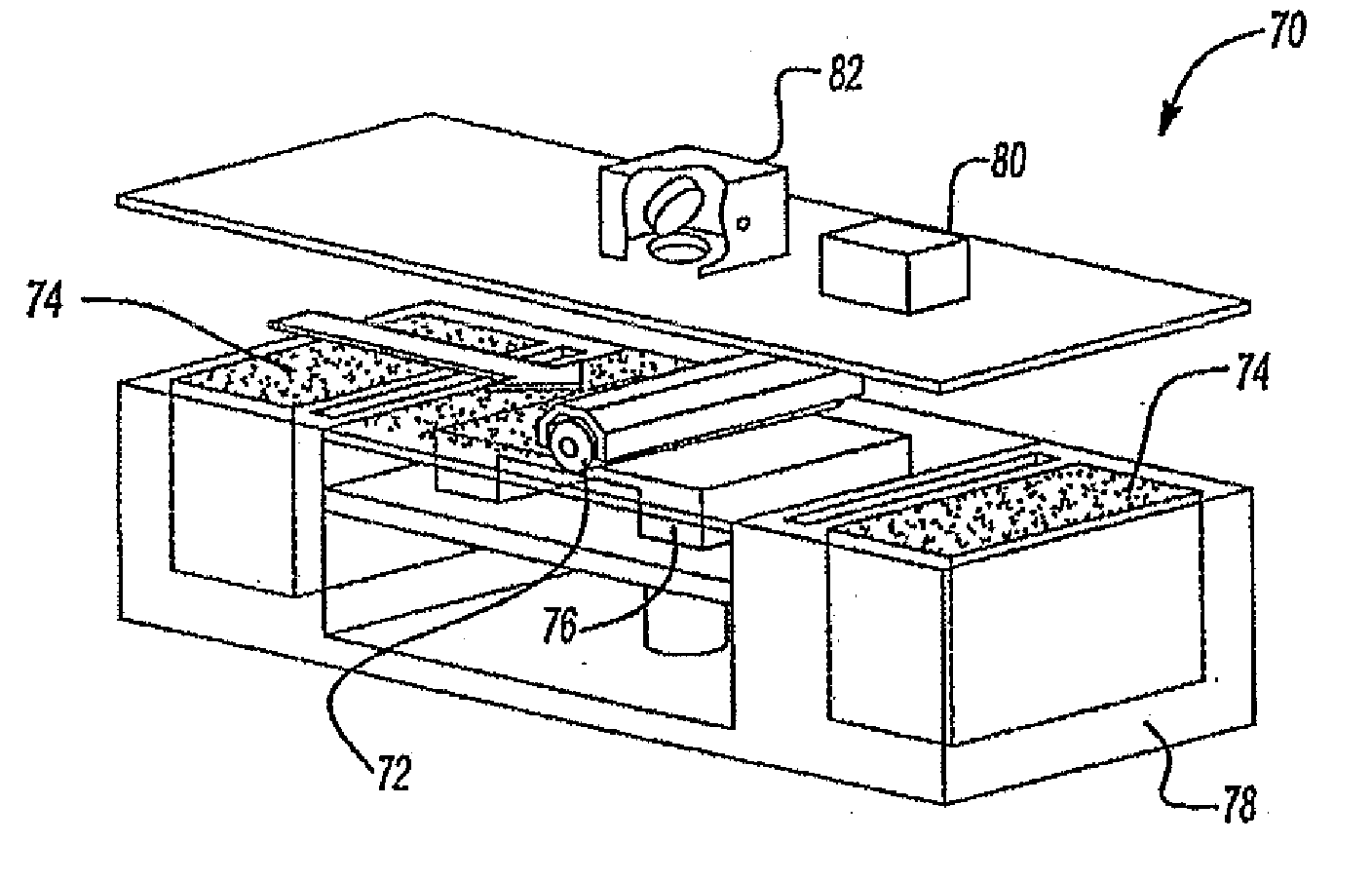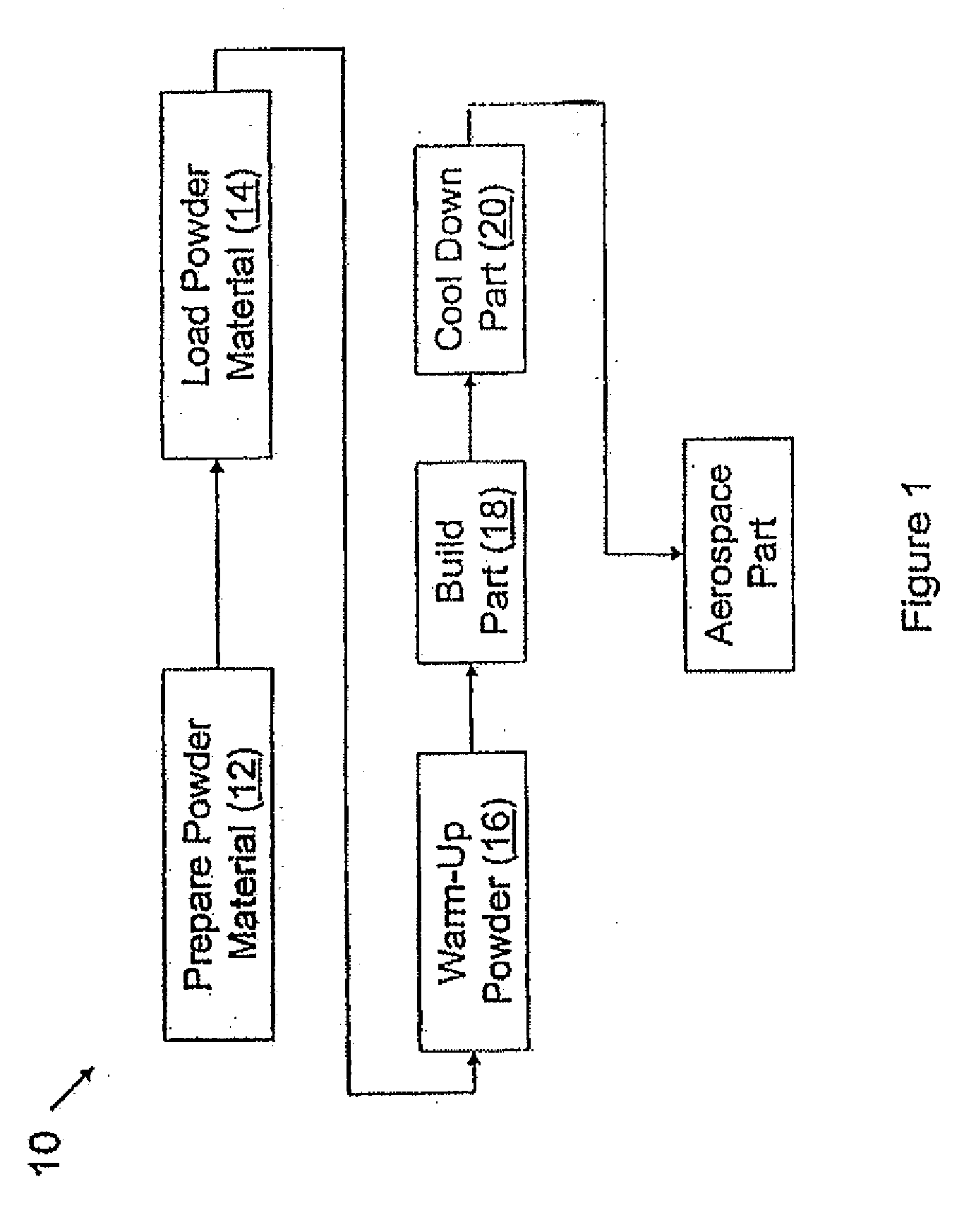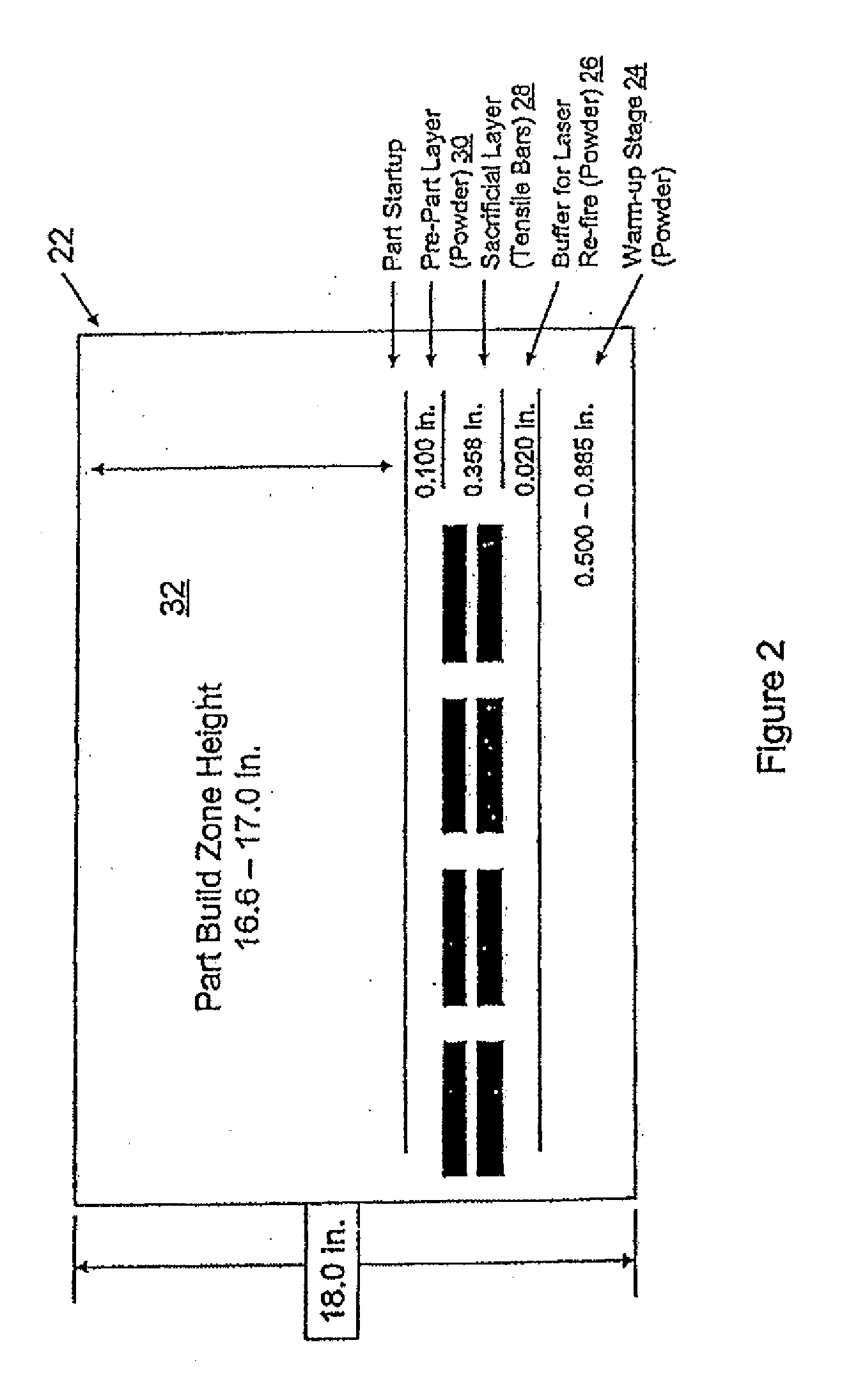Optimal dimensional and mechanical properties of laser sintered hardware by thermal analysis and parameter optimization
a laser sintering and thermal analysis technology, applied in the direction of additive manufacturing processes, manufacturing tools, instruments, etc., can solve the problems of reducing the time required to produce a rapid prototype, affecting the quality of laser sintering parts, etc., to achieve the effect of reducing deviation
- Summary
- Abstract
- Description
- Claims
- Application Information
AI Technical Summary
Problems solved by technology
Method used
Image
Examples
Embodiment Construction
[0019]The following description of the preferred implementations is merely exemplary in nature and is in no way intended to limit the invention, its application, or uses. Additionally, the selective laser sintering process as well as other rapid prototyping processes are well known by those skilled in the art and will therefore not be described herein in extensive detail.
[0020]Referring to FIG. 1, a process of fabricating at least one aerospace part according to the present invention is represented in a flow diagram format as indicated by reference numeral 10. As shown, the process generally comprises a step 12 of preparing a powder material, loading the powder material, per step 14, into a laser sintering machine, warming up the powder material at step 16, building the part at step 18, and cooling down the part at step 20. Additionally, the process 10 includes several build and part parameters, which are characterized as either “hidden,”“fixed,” or “variable.” The hidden and fixed ...
PUM
| Property | Measurement | Unit |
|---|---|---|
| temperature | aaaaa | aaaaa |
| temperature | aaaaa | aaaaa |
| temperature | aaaaa | aaaaa |
Abstract
Description
Claims
Application Information
 Login to View More
Login to View More - R&D
- Intellectual Property
- Life Sciences
- Materials
- Tech Scout
- Unparalleled Data Quality
- Higher Quality Content
- 60% Fewer Hallucinations
Browse by: Latest US Patents, China's latest patents, Technical Efficacy Thesaurus, Application Domain, Technology Topic, Popular Technical Reports.
© 2025 PatSnap. All rights reserved.Legal|Privacy policy|Modern Slavery Act Transparency Statement|Sitemap|About US| Contact US: help@patsnap.com



